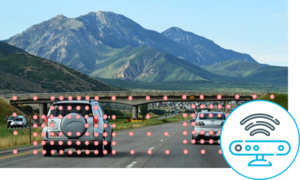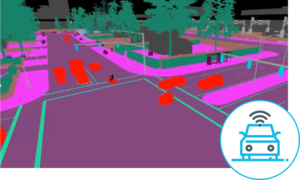Information and communication technologies are central for current and future technology trends in the mobility sector. Advancements in automated driving, safety-critical communications, battery safety, automated rail-traffic, object and infrastructure detection, audiovisual simulations, can contribute to solving challenges from greater road safety to climate change. Fraunhofer HHI offers a wide range of expertise and solutions for connected, safe and smart mobility.
Competencies at Fraunhofer HHI

Communications and Networks
- Automated driving, platooning, teleoperated driving, safety-critical communications
- SDR-based LTE/5G sidelink prototyping, realworld tests
- Multi-connectivity (hybrid V2X / multi-RAT, cellless systems)
- Propagation measurements / modelling
- Internet of Things, Massive Sensor Networks
- Cell-less and relay networking + Nomadic Networks
- Wireless connectivity for traffic infrastructure (Flexible fronthaul / backhaul)

Sensor Technology
- Coherent and Time-of-Flight (ToF) LiDAR with high resolution, accuracy and range
- Compensation of interference effects through advanced signal processing and coding
- Scanning LiDAR with 3D Optical Phased Arrays, solid-state design, hybrid integrated solution
- Terahertz-Sensors for non-contact paint thickness determination
- Non-conductive coating measurement independent of the substrate
- Capability to resolve individual layers in multilayer coatings
- Fiber optical sensors for battery safety

Smart Mobility
- Artificial intelligence for automated rail traffic
- Object detection and infrastructure recognition
- Compressed real-time capable neural networks
- Automatic CV-based analysis of large-scale traffic environments
- Deep learning-based traffic monitoring and accident avoidance
- Smart hardware solutions: wireless, hybrid, location based, self-configuring
- Audiovisual simulation of infrastructure projects
- Immersive visualization and auralization using VR, AR and MR
Applications
- Fiber-based, passive front-ends for easy LiDAR installation in cars
- Integration of LiDAR sub-systems, e.g. MEMS and compressed sensing
- Advanced Driver Assistant Systems (ADAS)
- Accurate environment recognition at higher speeds
- Lithium-ion batteries: Cell and system tests up to 250 kWh
- Second-life batteries for micro-grid applications
- Customized infotainment systems for environment simulation